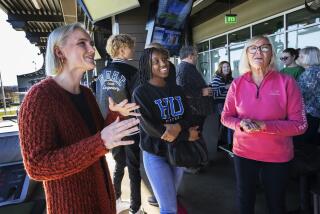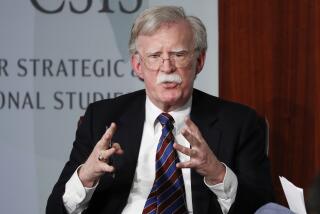Confusion grows over how bomber infiltrated CIA base in Afghanistan
- Share via
Reporting from Washington — The bomber who killed seven CIA employees at an agency forward base in Afghanistan had never been to the compound or met with agency operatives before the attack, U.S. officials said Tuesday.
The absence of any previous encounter adds to the confusion over how the attacker -- posing as an informant with valuable information on Al Qaeda -- was able to make it past security with a bomb apparently strapped to his body and lure seasoned CIA operatives to their deaths last week.
A U.S. intelligence official said that the bomber had provided a stream of useful information to the CIA after being presented by the Jordanian intelligence service as an Islamic militant who had switched sides and was now willing to work against Al Qaeda.
But the informant -- a 36-year-old Jordanian physician -- was still seen as an unproven asset by CIA officers, who nonetheless were willing to look past their lingering concerns because they believed that he was poised to deliver an intelligence breakthrough on Al Qaeda’s inner circle.
“The asset had a track record, but there were still questions about access and reliability,” the U.S. intelligence official said. “But, at some point, especially on a case like this, which appeared to have real promise, you have to go face to face.”
The decision to do so in this case precipitated the deadliest attack against the CIA in decades. Agency officers who flew to the remote outpost from Kabul, the capital, to attend the meeting were among those injured. The Jordanian intelligence operative who was the main point of contact with the informant also was killed.
A CIA inquiry is focused on two main questions: why the bomber was not more thoroughly screened and where he received the training and explosives used in the attack.
The bomber has been identified as Humam Khalil Abu-Mulal Balawi, who was known for extremist postings on websites affiliated with Al Qaeda before he was arrested by Jordanian authorities, recruited as a spy and sent to Afghanistan.
CIA veterans who served in the region say they are baffled by the security breach. When meeting informants, particularly those with ties to terrorist groups, “the first thing you do is have two security guys search him,” a former high-ranking CIA officer said. “It’s one of the basic building blocks” of espionage.
CIA officials have declined to disclose any details about the bombing.
“The CIA is looking at every aspect of the attack,” CIA spokesman Paul Gimigliano said. “The enemy doesn’t know everything that went on, and it makes no sense to fill in the gaps for him.”
U.S. officials have contested some of the criticism aimed at the agency, particularly speculation that CIA operatives were so eager for a breakthrough on Al Qaeda that they ignored the risks of agreeing to a meeting with an informant they had never encountered face to face.
“That’s off-base,” a U.S. intelligence official said. “You have to use unsavory individuals to penetrate terrorist groups -- a saint won’t get you inside. There’s huge risk and danger involved . . . but it’s irresponsible for anyone to suggest those hazards were somehow denied or ignored.”
The attack occurred at Forward Operating Base Chapman, a CIA facility in Khowst, a region across the Pakistani border from territory controlled by the Haqqani network, a militant group with ties to the Taliban that has carried out a string of suicide bombings.
The base is part of a constellation of CIA outposts whose mission is to disrupt militant networks in Afghanistan, as well as identify targets across the border for the CIA’s campaign of Predator drone strikes.
The Haqqani network has been particularly hard hit. Ten of the last 15 drone strikes last year took place in territory controlled by Haqqani, according to the Long War Journal, a website that tracks the Predator strikes.
Current and former U.S. officials have speculated that the Haqqani group may have helped orchestrate the bombing at the Chapman base in retaliation. But officials said the evidence so far is inconclusive.
More to Read
Sign up for Essential California
The most important California stories and recommendations in your inbox every morning.
You may occasionally receive promotional content from the Los Angeles Times.










